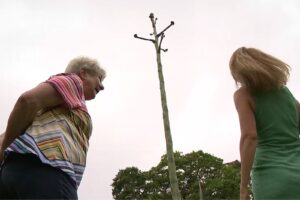Succulents, with their plump and vivacious forms, are often thought of as sun-worshipping denizens of arid landscapes. Their reputation for thriving in bright, sunlit conditions precedes them, much like the allure of a siren luring sailors into uncharted waters. But can these resilient plants really flourish in the shadows? This inquiry unveils a tapestry of complex biological adaptations and surprising possibilities.
Although succulents are synonymous with deserts and direct sunlight, their adaptability reveals a multifaceted nature that can captivate even the most seasoned plant aficionados. Let us embark on an exploration of their extraordinary capabilities to thrive in less-than-ideal light conditions.
Contrast the idea of a succulent with images of lush rainforests; however incongruous it may seem, these plants can indeed find their niche in shaded environments. The phenomenon is akin to an undercover agent blending into the shadows while still maintaining their core identity. Let us delve into the biology, techniques for growth, and applications of cultivating succulents in shaded areas.
Understanding the Biology of Succulents in Low Light
To grasp the essence of succulents’ adaptability, it’s essential to appreciate their unique physiological structures. These plants possess the remarkable ability to store water in their leaves, stems, and roots, allowing them to weather periods of drought. This water-retaining capacity may not, at first glance, suggest a preference for shade, yet it imbues them with the resilience required to survive in varying light conditions.
The fundamental trait that allows many succulents to thrive in lower light environments is their photosynthetic mechanism. While most plants utilize a process called C3 photosynthesis, certain succulents, particularly those from the Crassulaceae family, employ Crassulacean Acid Metabolism (CAM). This means that they open their stomata at night, absorbing carbon dioxide and subsequently using it in the photosynthesis process during the day, when the stomata are closed. This adaptation enables succulents to minimize water loss and utilize available light more efficiently, even in subdued settings.
Ultimately, the spectral quality of light matters as well. Shade does not equate to darkness. Indirect light, akin to the dappled sunlight filtering through the leafy canopy of a forest, can provide the essential wavelengths that succulents require. Understanding these nuances invites an appreciation for cultivating these plants in spaces that might initially seem inhospitable.
Strategies for Growing Succulents in Shade
Having established that succulents can indeed survive in less-than-ideal lighting, it’s imperative to consider the strategies that foster successful growth. Providing an optimal environment for these resilient flora necessitates meticulous attention to their other needs, including soil composition and watering patterns.
Begin with the right substrate. A well-draining soil mix is crucial; it’s essential that the medium allows for adequate aeration and moisture retention. A combination of coarse sand, perlite, and organic compost can create a perfect blend that supports root viability. Think of this mixture as a breathable quilt, enveloping the root system while preventing waterlogging.
Next, consider the water regimen. In shaded environments, where evaporation rates may be lower, succulents require less frequent watering compared to their sun-drenched counterparts. It is vital to adopt a “less is more” attitude, ensuring that the plants do not sit in stagnant water, which could promote root rot. Testing the soil moisture level with your finger is an age-old yet invaluable technique; the goal is to allow the soil to dry out between waterings, akin to allowing a fine wine to breathe before savoring its depth.
Additionally, if creating a natural filter, placing succulents near windows with sheer curtains or in areas illuminated by ambient light sources can bridge the gap between direct sunlight and total darkness. Crafting an environment where light is filtered can significantly enhance their vitality while maintaining the appeal of your indoor forest.
The Aesthetic Appeal of Shaded Succulents
Integrating succulents into shaded areas not only challenges preconceived notions but also unleashes a plethora of aesthetic possibilities. Imagine a tranquil nook in your home, where the softness of indirect light creates an ethereal glow around an array of succulents, each variety revealing its unique form and texture. The mottled greens, blues, and purples of these plants become even more pronounced in the gentle embrace of shade.
Consider how the juxtaposition of different species can result in textural diversity and visual intrigue. For instance, pairing a silky-leaved Echeveria with the spiky allure of an Aloe can create a dynamic landscape, a botanical symphony compelling the observer to reflect on the wonders of nature’s design. The organic forms and subtle color variations enliven shadowed corners, transforming them into living art installations.
In conclusion, succulents are far more than mere symbols of arid landscapes. They represent resilience, adaptability, and beauty, even in the most unexpected environments. By understanding their unique biology, employing effective growth strategies, and embracing their aesthetic virtues, one can revel in the joys that come from cultivating succulents indoors, even in the most shaded of nooks. In doing so, we uncover yet another layer of their enigmatic charm and create a sanctuary of life amid the quiet embrace of shadow.





Leave a Comment